Bladerunner
(Courtesy of SA BEST)
Teams are tasked with completing the following objectives:
- Acquire an OSOW permit and relocate Prairie Chicken Environments.
- Transport turbine blades and assemblies to the construction location.
- Install transported components on turbine towers.
- Set assembled turbines upright.
- Expand blades to final position.
Each team is assigned a triangular portion of the field that is divided into a component stockpile area and a turbine assembly area. Travel between the two areas can be accomplished by either traversing a section of bad road or by crossing a bridge. Gates must be opened to cross the bridge and an Over-Size Over-Weight (OSOW) permit can be obtained by triggering a switch located next to the bridge.
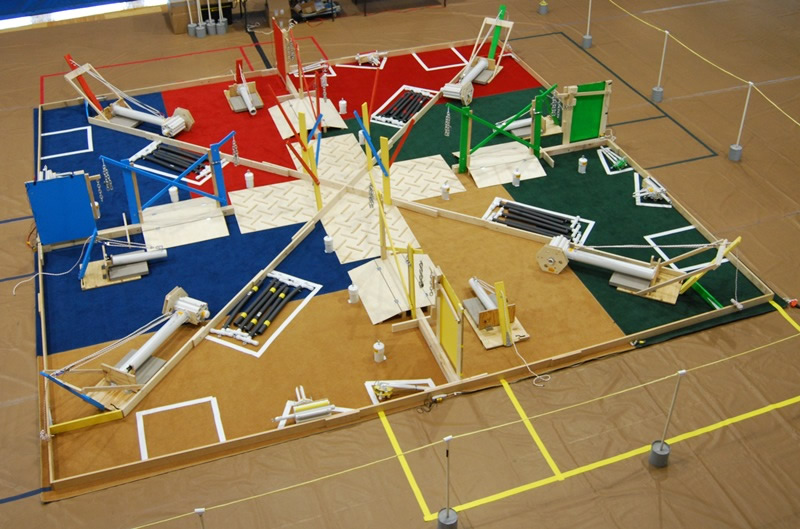
Within the assembly area, there is a small turbine tower and a large turbine tower. Both towers begin in a horizontal position and are connected to a rope and pulley system that allows the towers to be brought into a vertical position where they will latch in place. The large turbine assembly includes the nacelle and blade hub while the small turbine consists only of the tower and base portion.
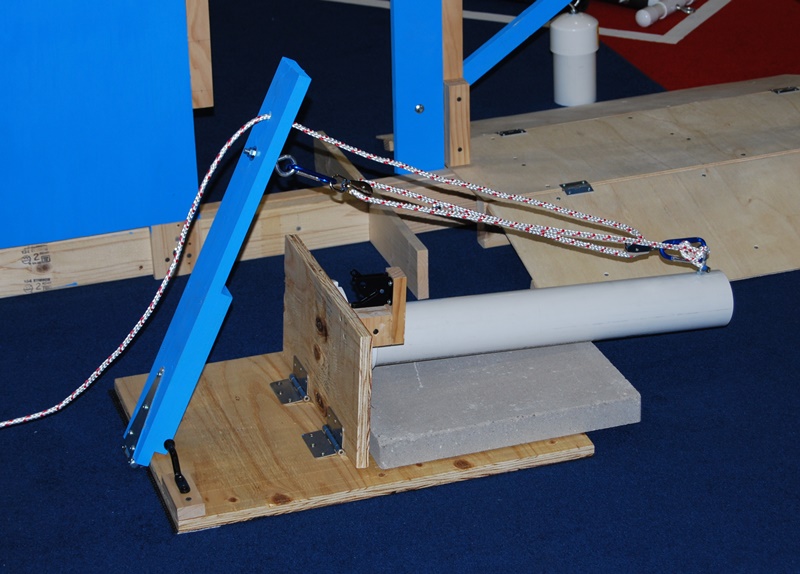 |
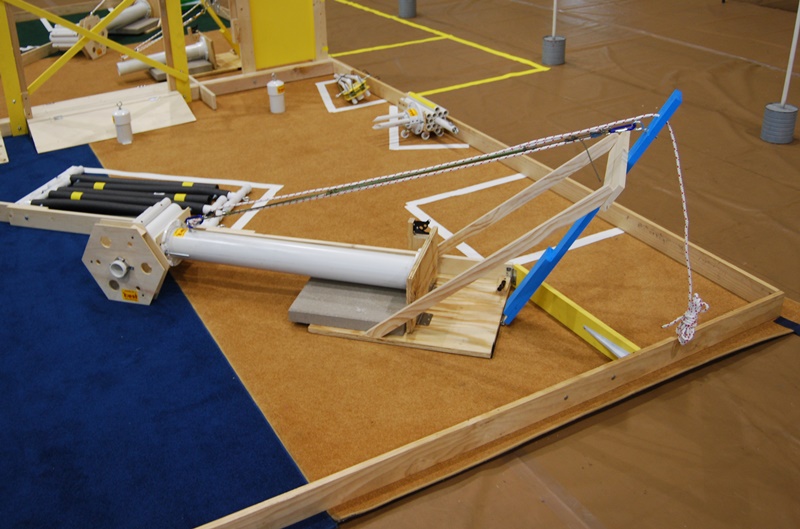 |
| Small Tower | Large Tower with Nacelle and Hub |
The components to complete the turbines are stored in the stockpile area. The components include individual blades for the large turbine, a nacelle for the small turbine, and a hub and compacted blade assembly for the small turbine. These components must be transported to the assembly area for integration into the turbines. Three prairie chicken environments are also located in the assembly area. The prairie chicken environments should be relocated to the safe area that includes the area where the robot initially starts and not harmed.
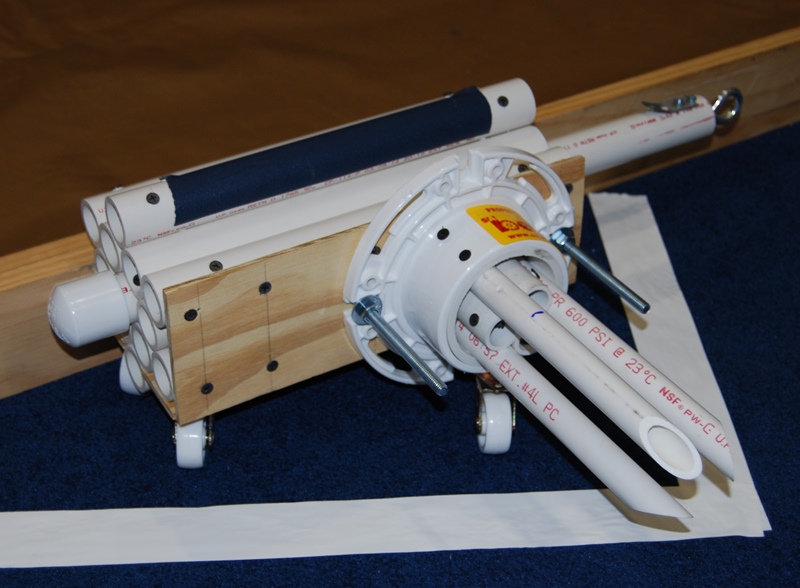 |
 |
| Small Nacelle | Small Blade Assembly |
Teams that are adjacent on the field may choose to cooperate with each other. When two teams choose to cooperate, the barrier between the teams is removed. Cooperating teams can share resources to build turbines that consist of components from two teams. When a team cooperates with the team to its left, the team is allowed to install its components on the left team’s turbine towers. When a team cooperates with the team to its right, that team is allowing the right team to install components on its towers. Teams share points from mixed tower construction and additional bonus points are awarded for towers with mixed components.
Teams are awarded points for performing actions related to logistics actions, transport, and assembly. Points are awarded based on the position of the game pieces and field elements at the end of the game. The point values for the logistic actions are:
- OSOW Permit – 5 points
- Bridge Gate Opened – 5 points per gate
- Prairie Chicken Environments:
- Upright in safe zone – 10 points per Environment
- Upright, not in safe zone – 4 points per Environment
- Not Upright – -10 points per Environment
Transport points are awarded for moving turbine components from the stockpile area into the assembly area. If a team does not obtain an OSOW permit, they will not receive any points related to transporting or assembling the turbine components. Only three of the large turbine blades are available to receive transport points since the other three blades are intended for cooperative play. To receive the transport points, the turbine components must be located completely within the assembly area and must not be in contact with the robot. Points for transport are:
- Small Nacelle – 30 points
- Small Hub/Blade Assembly – 30 points
- Large Turbine Blade – 10 points per blade
The assembly of the small tower includes the following steps and point values:
- Small nacelle installed on tower - 30 points
- Small hub/blade assembly installed on nacelle – 30 points
- Bonus for completing items 1 & 2 – 10 points
- Bonus for fully constructed turbine in upright position – 10 points
- Blades expanded on upright tower – 20 points
The order in which the above operations take place doesn’t matter relative to scoring.
Blades for the large tower can be installed in two different positions. Position 1 requires installing the PVC cap portion into the hub. For the blade to be installed in Position 2, both the PVC cap and the rod portion must be installed in the hub. Points for elements of assembling the large tower are:
- Blade installed in Position 1 – 20 points per blade
- Blade installed in Position 2 – 40 points per blade
- Bonus for the tower in the upright position with at least one blade – 20 points.
When teams cooperate, some points are shared by the teams and bonus points increase significantly for turbines constructed with mixed components. There are advantages to cooperating, but the scoring details are too complicated to describe here.
- There are numerous restrictions on how the game is played. A partial list of some of the basic restrictions is provided here:
- The spotter may erect the wind turbine(s) using the rope(s). The tower can be raised and lowered as desired until it is locked into the upright position.
- The spotter may manipulate the blades on the large turbine to place them in the extended position if they have been partially installed and the large turbine has already been fully erected.
- Game pieces that fall outside the field are out of play.
- A team may never cross another team’s bridge or bad road section, even if they are cooperating with the other team.
There will be three phases to the contest: a partial round robin seeding competition, a six game round robin semi-final between the top eight teams, and a three game round robin final between the top four teams. During the seeding competition, each team will play the same number of games against randomly selected opponents. The team’s average score during the seeding competition will be used to rank the team and to determine seven of the eight teams that will advance to the semi-final round robin playoff.
The eighth team for the semi-finals will be the winner of a single “wildcard” game. The participants for the wildcard game are selected based on the score of their engineering notebook. All teams are required to turn in an engineering notebook documenting the development and design of their robot. This notebook is a significant portion of the BEST Award and the wildcard game gives teams further incentive to turn in quality notebooks and rewards them for their effort.
At the start of the semi-finals, the scores will be reset to zero. For the semi-final round robin playoff, the top eight teams will each play three matches. The total of each team’s scores for these three matches will determine which four teams advance to the finals. For the final competition, total scores will again be reset to zero. The top four teams will play three additional matches to determine the final ranking order
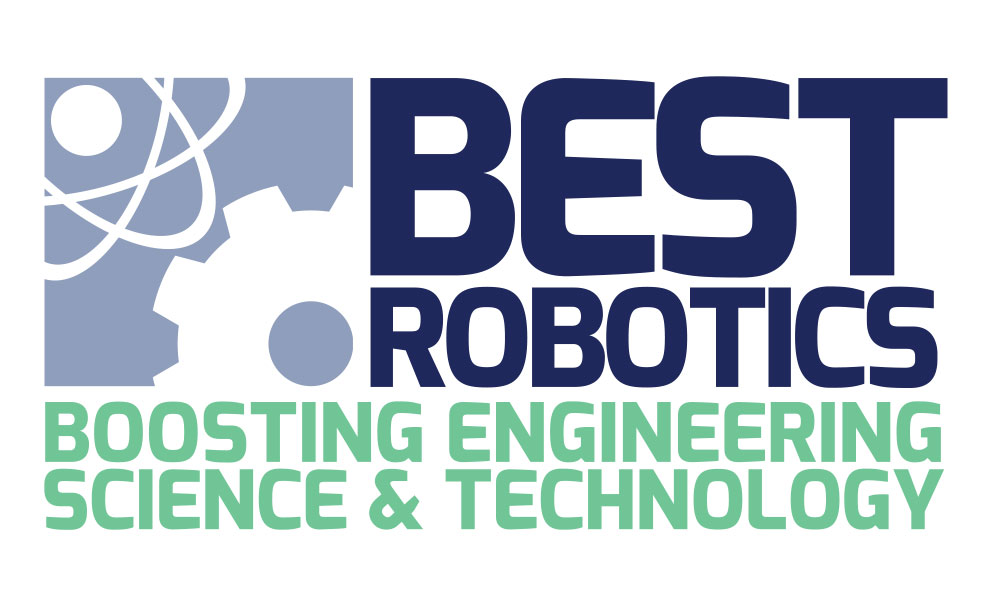
 Announcements
Announcements










